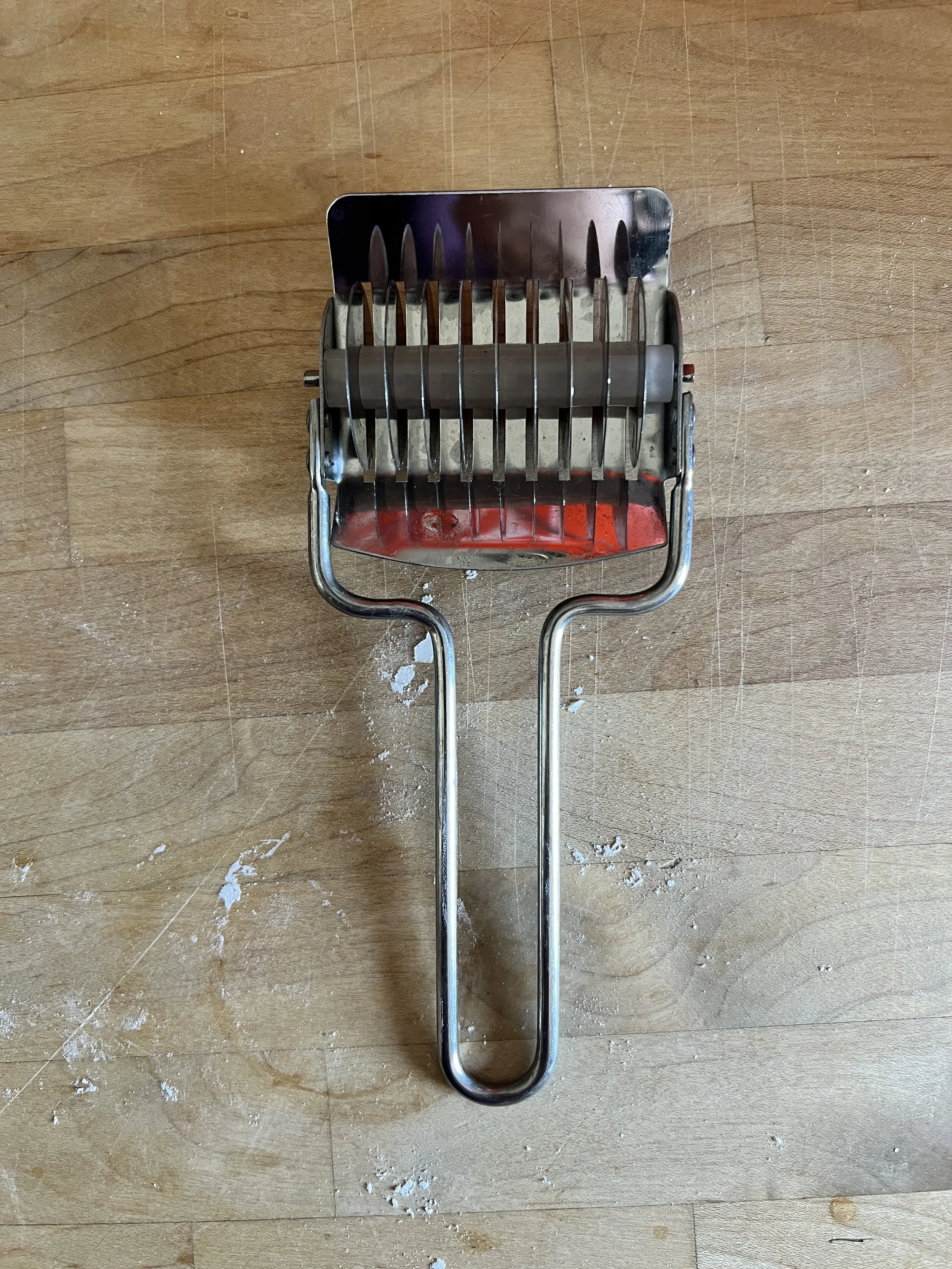Lao Noodle Salad | Thum Khao Piek Sen ຕຳເຂົ້າປຽກເສັ້ນ
What is Lao Noodle Salad Thum Khao Piek Sen?
This handmade rice noodle salad combines elements from two traditional Lao dishes: khao piek sen and thum mak hoong. It merges the best aspects of both, resulting in a saucy and spicy noodle dish that tantalizes the taste buds. The noodles are delightfully chewy and bouncy as they soak up the flavorful Lao sauce, creating a truly unique culinary experience.
Why is Lao Noodle Salad Thum Khao Piek Sen important in Laos?
Two staple dishes found in many Lao households are thum mak hoong, a Lao papaya salad and khao piek sen, a Lao chicken noodle soup. The former is typically paired with sticky rice and grilled protein, while the latter is often enjoyed in the morning. This Lao noodle salad exemplifies the adaptability of Lao cuisine, showcasing how various ingredients can be transformed into papaya salad-like dishes. The hand-cut noodles are particularly cherished, with each family having their unique method of preparation. Whenever I'm torn between which dish to indulge in, I often opt for this versatile noodle salad—it perfectly bridges the flavors of both traditional dishes.
What rice flour and tapioca flour should be used?
For jasmine rice flour, the red Erawan brand consistently yields good results, while tapioca starch from the Three Deer Brand is recommended for a smooth and pliable dough. Alternatively, tapioca starch from Erawan can also be used, but it tends to result in a slightly drier and less soft dough. It's important to work quickly with this brand, as the dough can become firm rapidly. If needed, you can add a little more boiling water to soften it.
What makes the Lao thum sauce different?
The Lao thum sauce stands out distinctly from its sibling salads due to its darker hue, heightened pungency, and intense spiciness. Its unique flavor profile is attributed to ingredients like shrimp paste and unfiltered fish sauce called padaek. While some Southeast Asian markets offer pre-made Lao papaya salad sauce, it may not be readily accessible for everyone. In such cases, I recommend preparing your own sauce in larger quantities. For this noodle dish, I prefer keeping the thum sauce slightly simpler to highlight the noodles and avoid incorporating whole crab pieces, simplifying the preparation process.
What’s the best way to cut the noodles?
Hand-cutting noodles is a labor of love, but it can become tiresome, especially when making large batches. That's why I highly recommend using a noodle cutter like the one below, particularly for making khao piek sen noodles. This cutter consistently produces strands of the perfect size—not too big, not too small. It's most effective when the dough is rolled out extra thin, allowing the cutter to glide through effortlessly. Adding this kitchen tool to your collection will undoubtedly streamline the noodle-making process and make your life much easier. You can find the tool on Amazon through the following link: https://amzn.to/3QMknRu.
Tips & Tricks in making the best Lao Noodle Salad Thum Khao Piek Sen
The key to making your Lao Noodle Salad Thum Khao Piek Sen truly delicious lies in the details, especially in sourcing your ingredients.
For the padaek (unfiltered fish sauce), where you get it from makes a significant difference in the flavor of the thum sauce. Aim to procure it from Laos or a trusted Lao source, like a local Lao auntie.
To fully enjoy the dish, consume it immediately after mixing the sauce with the noodles. Delaying consumption can result in the noodles becoming overly soggy as they soak up the sauce.
To simplify the cooking process, invest in a quality noodle cutter. It'll streamline the preparation and ensure uniformity in your noodles.
Watch on Youtube

Lao Noodle Salad | Thum Khao Piek Sen ຕຳເຂົ້າປຽກເສັ້ນ
Ingredients
Instructions
- Begin by placing the peppers and palm sugar in a large mortar. Crush them together to form a paste.
- Next, add lime juice to the paste and mix thoroughly.
- Incorporate the shrimp paste, ensuring it's well blended with the rest of the mixture.
- Integrate the tamarind paste and padaek, mixing well.
- Then, add MSG and halved tomatoes. Gently crush each tomato to release its juices into the sauce.
- In a separate large bowl, combine rice flour and tapioca flour. Whisk them together.
- Slowly pour boiling hot water into the flour mixture, stirring with a silicone spoon.
- Once the mixture is well combined and doesn't stick to your hand, knead it with your hands until it forms a smooth dough.
- Roll out the dough thinly using a rolling pin.
- Cut the dough into noodles either using a noodle cutter or by hand.
- Bring a large pot of water to a rolling boil. Add the cut noodles and cook for 2-3 minutes.
- Drain the noodles and rinse them under cool water until they are no longer hot.
- Transfer the noodles to a bowl and top them with the thum sauce. Mix well.
- Enjoy your noodles immediately.




